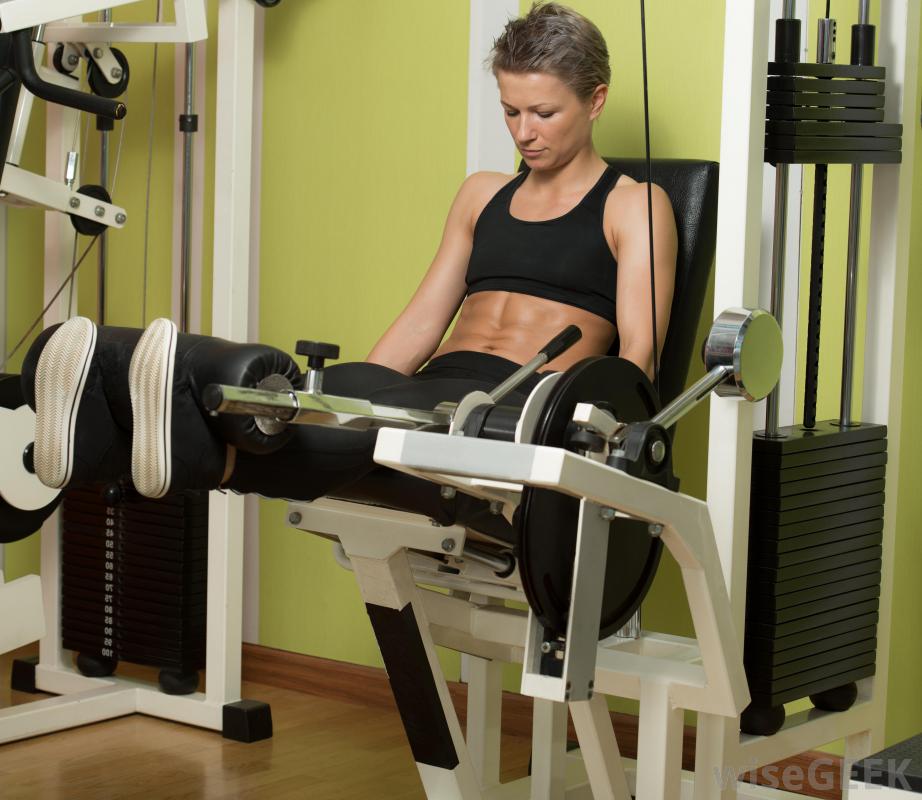In this post we look at the variety of ways you can perform a single repetition and the likely adaptations this will produce.

The value of a personal trainer is sometimes gauged on the variety of exercises they create.
Doing something different doesn’t need to involve something that looks different however.
It can be applying existing exercises in innovative and effective ways.
Let’s look at the many ways you could perform a repetition on something as garden variety as a leg extension machine.
Firstly do you have to move at all?
Not necessarily. Isometric holds (muscle contractions without movement of the joints) can both highlight weakness and target it.
Try performing 5 second holds at 15 degree increments from the start position until your knee is almost straight. You’ll be surprised how difficult this is in some positions. Positions that you may have hurried through otherwise.
Note also that pushing into a fixed pad (which you can do on some machines) may produce a different effect from selecting a weight and holding it in position.
Speed
How quickly you perform a repetition will have an impact on both the type of muscle fibres you predominantly stimulate and what you’re training your nervous system to get better at.
Either an intention to move as quickly as possible, or a load of at least 70% of your one repetition maximum will stimulate fast twitch muscles fibres.
Whereas a longer repetition duration with a lighter load will predominantly target slow twitch muscle fibres.
That makes a 5 minute repetition, or one that lasts a couple of seconds both valid choices, depending on the goal of the exercise.
Who says you need to move at the same speed for the entire repetition either?
It’s common for people to use different speeds on the concentric (shortening) and eccentric (lengthening) phase of the repetition. You could go further however and move quickly through a particular portion of that concentric phase and slow down or pause in the remainder.
What are you thinking about?
Your focus during each repetition will have an influence on how you perform the exercise.
An external focus will generally promote the most efficient use of the muscles you’re targeting.
If I ask you to move the pad on the leg extension from point A to point B, you’ll recruit what’s necessary to achieve that outcome.
If however I put my finger on a particular quadricep muscle and ask you to keep that muscle as contracted as possible throughout the repetition, this will have a different effect. This is particularly useful in rehabilitation scenarios.
What are you doing with the other stuff?
Changing the position of your ankles will alter the sensation on the leg extension machine. Pointing your toes away from you will reduce tension in the back of your leg. Having your ankles move in the other direction may increase it.
If I ask you to keep your upper body as still as a statue whilst performing a repetition, this will likely drive additional muscle activity to your torso and upper body.
Load
The resistance you select will influence your ability to do all of the above. Notice however this is the only variable most people tend to think about manipulating.
If I select a large resistance on the leg extension, my ability to move fast, pause, or even think about anything else is diminished. All I can do is focus on keeping everything together and getting the weight from point A to point B.
A lighter weight will enable you to experiment with speed, pauses and intention.
Progression
Lastly a word on progression. Manipulating any of these variables should be done in a progressive manner. Before changing anything in your programme, look at what you’ve been doing over the last 2-3 weeks and ensure the changes you make aren’t radically different.
Summary
Human anatomy has remained unchanged for thousands of years.
Challenging it therefore needn’t involve exercises that begin to resemble circus acts.
To make progress in your own training think more about how you can manipulate existing exercises, rather than being drawn to the latest fads.